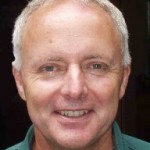A hard rains a gonna fall
When madness become normal.
Here’s a story about how forest land is being turned into sand as far as the eye can see – have a look at the photos with the article; it’s about strip-mining forests to extract oil from sand in the soil:
“Over the course of three days spent visiting reserves, band offices and the vast sand dunes left behind by the bitumen-scrubbers surrounding Fort McMurray, the Achuar confronted a reality that may one day be their own. And they didn’t much like what they saw.
This encounter was born of a new dynamic: the age of extreme oil. Gone are the days of sweet Texas crude and boundless Arabian oil fields, when petroleum lay so near the surface that all a company had to do was prick the Earth’s crust and let the black gold gush. To the environmentalists who worry about reaching “peak oil” (and a subsequent decline in fossil fuels), critics can point out accurately enough that the world is flush with new hydrocarbon reserves. They are less quick to acknowledge the epic complexity and risks of most of these new finds.
Alberta’s oil sands are the obvious example: Here, on average, two tonnes of earth must be strip-mined and seven barrels of water heated to steam in order to produce a barrel of oil. It takes a barrel’s worth of energy to produce just three barrels of oil; 30 years ago it would have been 100.
But extreme oil isn’t just a Canadian phenomenon: In 1985, only 6 per cent of the oil from the Gulf of Mexico came from wells drilled in water more than 300 metres deep. By 2009, it was 80 per cent, including BP’s Deepwater Horizon rig, which delved 1,500 metres underwater and then another four kilometres below the sea floor before exploding into history in its accident on April 20, 2010.
Brazil’s much-vaunted offshore deposits are just as deep. So are the Arctic deposits that Big Oil is eyeing now. Shell, for instance, has spent $4-billion preparing to explore off the shores of Alaska, without yet producing a single barrel. Further north, the federal government opened the bidding this week on 905,000 hectares of the Canadian Arctic sea floor, adding to the leases being explored in the Beaufort Sea by companies that have already spent billions in a region once thought forever out of reach.”
It’s hard to know what to say after reading this; who’s running the shop?
M

